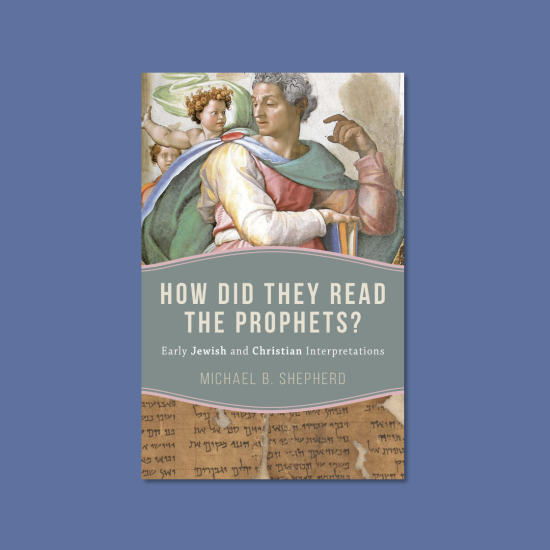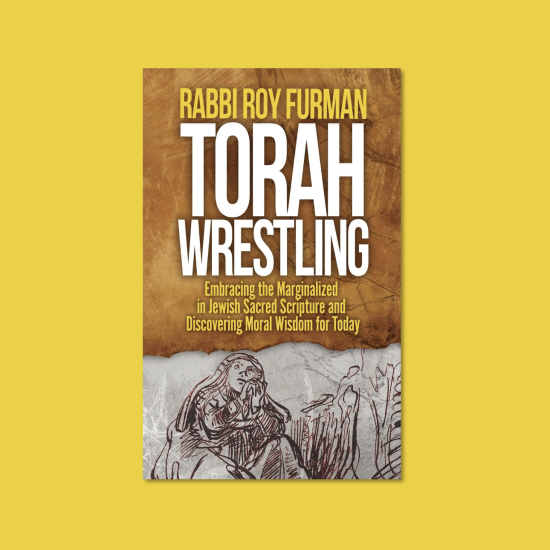

THE BOOK OF REVOLUTIONS: The Battles of Priests, Prophets, and Kings that Birthed the Torah. By Edward Feld. Philadelphia, PA: Jewish Publication Society, 2022. xxiii + 292 pages.
How did the Torah, also known in some circles as the Pentateuch, come into existence? Traditionally the first five books of the Tanakh or the Christian Old Testament were understood to be written by Moses. While there may be a few defenders of Mosaic authorship running around they are few in number. Since the nineteenth century, we’ve often spoken in terms of Wellhausen’s JEDP, but that theory has its own problems. So maybe we need to look in other places to find greater insight as to the origins of these five books. For Christians that means listening to our Jewish cousins who share this Testament with us. If we choose to do so there is much to learn.

Robert D. Cornwall
One scholar who has attempted to provide an intriguing and helpful introduction to the origins of the Torah is found in Edward Feld’s The Book of Revolutions. As the subtitle denotes, these revolutions that led to the emergence of the Torah involved priests, prophets, and kings. As for the author, Edward Feld, he serves as the Rabbi-in-Residence at the Jewish Theological Seminary of America, where he is an advisor and mentor to rabbinical students. He is also a Rabbi of the Society for the Advancement of Judaism and Hillel Director at Princeton University. Along with these duties, he is the senior editor of Siddur Lev Shalem, which is the Rabbinical Assembly prayerbook used during Sabbaths and festivals. He is also the editor of the High Holiday companion volume Mahzor Lev Shalem.
According to Feld, the Torah is the product of several revolutions, the first of which was a military coup that took place in the northern kingdom of Israel, along with the assassination of a king in the southern kingdom of Judea, and a quieter revolution that later took place during the Babylonian exile. These events produced three legal codes, the first is the Covenant code as found in the book of Exodus. The second is the Deuteronomic Code as found in Deuteronomy. Finally, there is the Holiness Code found in Leviticus. These three codes helped create biblical and modern Judaism.
With these three revolutions in mind, Feld seeks to read Torah with a historian’s eye, seeking to understand the context in which the texts emerged. While skepticism is warranted when it comes to historical analysis, he believes that skepticism can go too far. Thus, this is a call for a balanced approach.
As for the direction taken by the author in analyzing the text of the Torah, Feld notes that unlike many biblical scholars he chose not to primarily focus on the narrative portions of these texts, but instead focused on the legal sections. In his view, while the various editors of the Torah sought to create a continuous narrative, they largely left the legal codes intact. Thus, there isn’t just one legal code. With that in mind, Feld notes that when it comes to these legal codes “it is often easy to show the ways in which one code reworks the language of another. This evidence of priority leads to a historical understanding of cultural development.” Additionally, he believes and seeks to demonstrate (I think he does this rather well) how each of the three legal codes is the “product of revolutions that took place in biblical times” (p. xviii). As we move through the book, Feld provides his analysis of this evidence.
After opening with a prelude in which he takes note of the origins of the people of Israel, origins that are not necessarily clear, he begins to lay out the evidence of each of the four revolutions. The fourth revolution is essentially the final production of the Torah. Regarding the origins of Israel, he acknowledges that these are cloudy and that the biblical texts themselves provide divergent stories. As an example, he notes that the books of Joshua and Judges offer different versions of the settlement of the Land. However the nation came into existence, he suggests that we can point to the beginning of the first millennium as the point at which the clans and tribes moved toward the creation of a united kingdom, first under Saul and then under David. He notes that it’s possible that this process of uniting together as one nation that the tribes required the creation of a common origin story. While the tribes did unite for a time, they quickly broke into two kingdoms after the close of Solomon’s reign. Although these two kingdoms shared certain common elements and would from time to time be allies, they often were enemies or at the very least rivals. These realities contribute to the development of the different elements, including legal codes, that make up the Torah.
Feld divides the book into four parts, with each part focusing on one of the four revolutions. In Part 1 we encounter the first revolution that took place in the northern kingdom of Israel. The contributors to this revolution included the prophets Elijah and Elisha. along with the dynasty of Jehu, the king of Israel. Jehu’s dynasty replaced the dynasty of Omri (a dynasty that included the infamous couple—Ahab and Jezebel) with the support of the two prophets. The revolution that led to the replacement of the dynasty of Omri led to the creation, as Feld tells us, of the Covenant Code found in the Book of Exodus. He helpfully sets this code in its larger context. What is especially important here is that this code influences later developments among the biblical authors. So, items mentioned briefly in Exodus will get developed further in later books. One of the ways in which it influenced later developments involved how later Jews and Christians came to understand the nature of the covenant. Feld writes that “the code formulates a relationship of mutuality between God and the people Israel” (p. 43). In this section, Feld not only introduces us to how the idea of the covenant emerges in Exodus but introduces us to later rabbinic developments leading up to the present. Though the covenant code emerged in the north, it would later emerge in the southern kingdom of Judah in the form of Deuteronomy.
Before moving to the next revolution, the one that takes place in the south, Feld provides an interlude in which he sets up the upcoming conversation. Here he links the house of Jehu in Israel with the monarchy in Judea. Earlier in the book he had reminded us that while the northern monarchy was rather unstable, featuring several separate dynasties, none of which had links to David, the situation in the south was different. The monarchy in Judah remained in the hands of the descendants of David until the Babylonians ended the monarchy. While the monarchy remained in Davidic hands there was a link between the dynasty of Jehu and that of David in the form of Ahab’s sister Athaliah, who was the queen mother of Israel. She even ruled Judah for nearly six years before her son Joash gained maturity. It should be noted that the authors of 2 Kings rate the monarchs from Joash to Hezekiah very highly. It was also during this period that the northern kingdom fell to Assyria. While the southern kingdom shrunk, so that under Hezekiah it didn’t extend much beyond the walls of Jerusalem, the monarchy persisted.
While the kings of this period might have done what was right in the eyes of God, the situation on the ground beginning with Ahaz and moving toward Hezekiah, was not good. While the kingdom would gain some of its territory back under Manasseh and his successors, including Josiah, the kingdom’s future was tenuous. It is in this context that Deuteronomy, the second legal code emerges. This development is the focus of Part 2, which explores the revolution in Judah. Deuteronomy comes to the forefront during the reign of Josiah, who is seen as a major religious reformer. As described in 2 Kings, a book was discovered during the restoration of the Temple under Josiah. That book is believed to be Deuteronomy or at least a prototype of Deuteronomy. The discovery of the book corresponds with Josiah’s efforts to Judea’s religious life, which, according to Feld, was done with a very heavy hand. While Josiah’s death in battle brought this effort to an end, the foundations of religious reform had been set in motion. As time passed a new order of teachers, the Sages, was born, so that this code could be taught and lived.
While it’s clear that Deuteronomy depends on the earlier northern book of Exodus, it would take on its own identity. In fact, the authority ascribed to Deuteronomy would eventually be given to the entire Torah. Thus, he suggests that “it was Deuteronomy that gave rise to ‘the People of the Bok,’ and the People of the Book have marched to new places with books in hand” (p. 162). With the Deuteronomic Code the focus of Part 2, a section that takes up around 100 pages, Feld provides a second interlude where he discusses the end of the monarchy. He shares that the reforms connected to Deuteronomy did not get passed on to the generation that followed Josiah, who died in battle fighting the Egyptians at Megiddo, leading to Judea becoming a vassal of Egypt before being overtaken by Babylon. That eventually led to the demise of the monarchy along with sending the elite, including the priests, into exile in Babylon.
In Part III we are invited to explore with Feld a third revolution, one that took place among the exiles in Babylon. This next revolution involved not monarchs, who no longer ruled, but priests, prophets (such as Jeremiah), and scribes. As the exiles sought to discern a path forward after the destruction of the Temple and with the end of traditional Jewish religious experience, Jews began to develop a new legal code, the Holiness Code found in Leviticus. While a significant portion of Leviticus focuses on Temple worship and its leadership, ultimately the focus was on living as a people without the Temple. The concept of the holiness code as found in Leviticus is reflected in chapter 19 of that book where the people are commanded: “to be holy, because the Lord Your God is holy.” Feld writes that the texts, which include much of Leviticus along with parts of Numbers and other passages of Torah share this theological conception: “an emphasis on the practice of holiness even outside the Temple confines, amid all of the people” (p. 187).
The authors of this code are understood to be reformist priests (no longer serving in the Temple). They seek to combine their calling with a prophetic perspective that leads to a vision of the future of this society. Thus, “while their rhetoric is formed from the priestly language of holiness and purity, it incorporates the prophetic demand of the centrality of personal behavior on the part of each person in serving God.” (p. 188). He takes us through discussions of such things as the Sabbath and Jubilee, along with how the stranger is to be treated. While Exodus and Deuteronomy focused on civil jurisprudence and ethical imperatives, he writes that “The Holiness Code added to this understanding its own insistence on the need for personal transformation and its dream of a utopian society” (p. 208). This discussion of the Holiness Code casts a new light on the code and the way we might understand Leviticus. It makes sense that a code focused on personal transformation would emerge in the context of an exile.
Part IV is the briefest section of the book, but it helps bring together everything we’ve encountered in previous sections. It is here that Feld shows us how the Torah took shape and was experienced after the exiles returned to Jerusalem and Judea under the Persians and began to put things back together. One of the key figures in this part of the story is Nehemiah who served as the Persian-appointed governor and worked with Ezra the scribe who was responsible for bringing much of this heritage together that would become Scripture and then promulgating it among the people. While the later prophets such as Haggai, Malachi, and Zechariah do not speak of Torah, one of the elements of the emergence of the Torah is the role played by the priestly leadership in the post-exilic period since the monarchy was not restored. Feld notes helpfully that the Persians were willing to allow religious expression and forms of self-government but not a monarchy, which might give the people a sense that political independence might be possible. As for the religious perspective that emerges at this point, it is clearly monotheistic.
Feld has provided us with an intriguing picture of early Judaism by focusing not on the historical narrative but on the development of the legal codes. By building on earlier legal codes that emerged in the context of three revolutions, and layering new realities on earlier foundations, the Jewish people were able to create a sense of identity that united them together as they faced challenge after challenge. While the northern kingdom of Israel may have disappeared, it continued to live on in the legal code that emerged in the southern kingdom of Judah. While later readers might read the Torah/Pentateuch as a singular/unitary narrative, that narrative emerged from several revolutionary moments.
As Feld notes, reading it as a singular story, we discover that “exile from the Garden can be redeemed by a people living in its land with God in its midst” (p. 241). Although we have become accustomed to reading it as a unitary story, there are many contradictions present in these five books. Those contradictions reveal the different eras in the life of the people that produced these texts. They also give later interpreters grist for their own interpretive ventures, which often involved resolving difficulties. In The Book of Revolutions, Edward Feld invites us to step back from that interpretive move and take note of the disparate parts and how they emerged as a people moved through time. That can be uncomfortable, but also useful. Thus, as a Christian reader of Judaism’s foundational text, a text that Christians have built upon, we will find enrichment if we take seriously this book. As such, I believe that this book can prove helpful not only to Jewish readers of the Torah but also to Christian readers of a common text.
This review originally appeared on BobCornwall.com.
Robert D. Cornwall is an ordained minister in the Christian Church (Disciples of Christ). Now retired from his ministry at Central Woodward Christian Church (Disciples of Christ) of Troy, Michigan, he serves as Minister-at-Large in Troy. He holds a Ph.D. in Historical Theology from Fuller Theological Seminary and is the author of numerous books including his latest books: Called to Bless: Finding Hope by Reclaiming Our Spiritual Roots (Cascade Books, 2021) and Unfettered Spirit: Spiritual Gifts for the New Great Awakening, 2nd Edition, (Energion Publications, 2021). His blog Ponderings on a Faith Journey can be found at www.bobcornwall.com.






